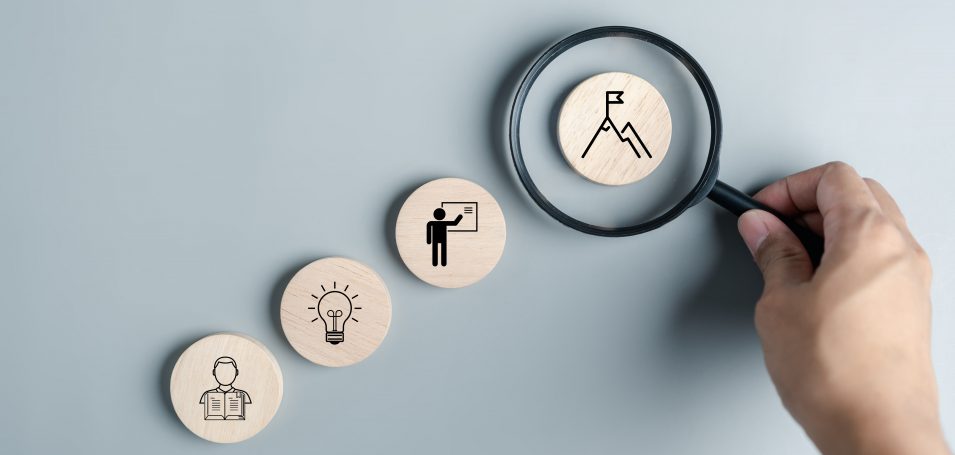Customer satisfaction is the key to retention and long-term value, and an educated customer is a happy one. According to Forbes, customer education programs can improve retention by over 7% and lead to revenue growth of 25% to 95%.
In simplest terms, customer education involves sharing knowledge with new and existing customers. It teaches them how to use your products and services and derive more value from them. That’s why forward-thinking businesses in every industry are investing in learning management systems (LMS) to power their customer education.
Below, we’ll dive into what an effective customer education program looks like, its benefits to your organization, and how to build it from the ground up.
What Is a Customer Education Program?
A customer education program is a systematic approach to helping customers learn how to use a product or service effectively. It consists of educational content, the total resources (lessons, modules, etc.), delivery methods, and how customers access the content.
Some companies distribute content across their existing training and engagement infrastructure. Others invest in a standalone customer education platform. But, wherever it is, it’s where customers go to learn.
Customer education aims to equip customers with everything they need to maximize their value. It increases customer satisfaction and loyalty, leading to sustained customer success.
To maximize retention, education should occur at all stages of the customer lifecycle, from onboarding through adoption to encouraging customers to become advocates.
Benefits of a Customer Education Program
Implementing customer education offers a boon to businesses of all shapes and sizes and across every industry.
The biggest benefits of customer education include:
- Improving customer retention by building satisfaction and reducing churn
- Speeding up onboarding, allowing customers to use products sooner
- Increasing total customer lifetime value through optimal engagement
- Reducing the overall volume of support requests, saving time and resources
- Maximizing adoption and upsell opportunities by teaching advanced features
- Building advocacy by turning educated customers into voluntary promoters
How to Build the Best Customer Education Program
Building a powerful customer training program starts with developing a customer education strategy. You must understand what your customers need and what you want from the program.
Those fundamentals inform:
- Content you develop
- Tools you use to disseminate it
- Overarching curriculum
- Long-term program maintenance through training and adjustments
Let’s take a closer look at what each step entails.
1. Understand Customer Needs
It all starts with your customers (the learners) and what they need from an education program. You should research common challenges and gaps in your target market by consulting external studies to understand what industry standards are like.
Then, you should gauge your specific customers’ needs to the best of your ability.
This primary research comprises surveys, interviews, and longitudinal data analysis that your existing customers consent to. Collect as much quantitative and qualitative data as possible, and then paint a picture of what the customer journey or customer experience really looks like.
What pain points are they experiencing? Then, you should triangulate these with your business objectives to determine educational priorities.
2. Define Clear Goals
Here’s where you’ll turn the collected data into clear, reasonable goals for your customer education program. For example, you might determine that onboarding is a source of friction because it takes too long.
This could lead to a goal of reducing onboarding time by 10%. Alternatively, if you find that users are unaware of or don’t use specific features of your platform, you may aim to increase adoption by 20%.
3. Choose the Right Content Types
Once you set learner needs and program goals, you’ll need to consider what kind of content you’ll deliver to meet both.
On one level, this means deciding format:
- Text-based tutorials and guides are often the quickest and easiest to develop.
- Videos, webinars, and interactive content increase educational accessibility.
- Certification programs and achievement trackers can improve engagement.
On another level, you should also start thinking about content in terms of subject areas, themes, and competencies—more on this in the curriculum section below.
4. Leverage the Right Tools and Technology
This stage is crucial for turning your plan into a reality. You’ll need to carefully select, smoothly deploy, and effectively manage the best tools and technology available.
A successful customer education program needs a platform to host its multimedia content, and it should ideally have interactive capacity for discussion boards. Another element to consider here is customization for user profiles and achievements or a leaderboard for a gamified element that encourages healthy competition.
5. Design an Engaging Curriculum
The curriculum is the overarching plan for what content learners will be expected to take in, how, and when. There should be a clearly defined learning path with levels ranging from beginner to expert. Higher-level content on specialized features should be available once learners have proven they understand the basic content modules.
Whether or not you’re using a gamification system, you should include some form of milestone or reward to acknowledge learners’ achievements. A study on the impact of rewards in traditional education has shown correlations between reward systems and interest, strong learning habits, and motivation to learn.
6. Train Internal Teams
Customer education is about training and teaching customers to derive value from your products and services. But to reach its full potential, you’ll also need to teach and train your staff on how to engage learners. This means preparing sales and success or support teams to deliver and promote customer education content.
One effective approach is to invest in a customer education certificate program that acknowledges staff readiness to educate. Customer education initiatives ensure that personnel engaging with learners are equipped to both answer questions and guide them to the right resources to deepen their knowledge and customer engagement.
7. Measure Success and Iterate
Last but not least, you’ll need to monitor the success of your education program after deployment. Make sure to collect data on important metrics related to engagement:
- Measure retention rates (and churn) in learners against control groups
- Count support tickets and the severity or complexity of issues being flagged
- Study feature usage, including in learners (pre- and post-education)
If you’re not seeing the desired results across these and other metrics, you’ll need to adjust. For example, you could shift emphasis or add more of a certain feature (e.g., gamify more, or require additional modules for basic certification).
Working with a quality LMS provider will give you unparalleled insights into what’s working, what isn’t, and why—along with guidance on how to solve identified issues.
Hallmarks of Effective Customer Education Programs
No two customer education programs are built the same way, nor should they be. A strong customer education system should be tailored to its users’ exact needs and the organization’s business goals (see steps 1 and 2 above).
But there are still some exemplary customer education programs you can lift ideas from and emulate:
- HubSpot Academy: This platform hosts a tremendous amount of video and multimedia content specializing in digital marketing skills and sensibilities.
- Salesforce Trailhead: This platform focuses on training with artificial intelligence (AI) tools and emphasizes engaging gamified content modules.
Both of these programs are effective because they are easy to access, have thoughtful and engaging content, and provide clear learning paths for users.
Best Practices for Customer Education Programs
Beyond emphasizing ease of access, quality content, and clear learning paths, the best customer education teams and customer success managers also tend to follow consensus best practices.
For example, regardless of your customer base or business needs, you should aim to update your educational content regularly as your products evolve. As you add new features, you should also eyeball new modules.
In addition, you should always aim to involve customers themselves in the ongoing development of your program. Solicit feedback through as many channels as possible and implement changes customers specifically ask for to the best of your ability.
And be sure to keep program goals aligned with business objectives, especially as these change over time. Profitability might mean more at later stages of your growth than it does up front. So, as you scale, be sure to update program goals accordingly.
Find the Right Customer Education Solution Today
Building and maintaining an effective customer education program is a surefire way to supercharge customer satisfaction, retention, and engagement. Happy customers, in turn, lead to rapid and sustainable growth. That’s the ultimate power of learning.
Thought Industries helps businesses in all fields create and manage powerful training and educational programs. We’ll work with you to create and sustain a customer education platform that sets you up for long-term success.
Get started today by following the steps above—or get in touch to learn more!


